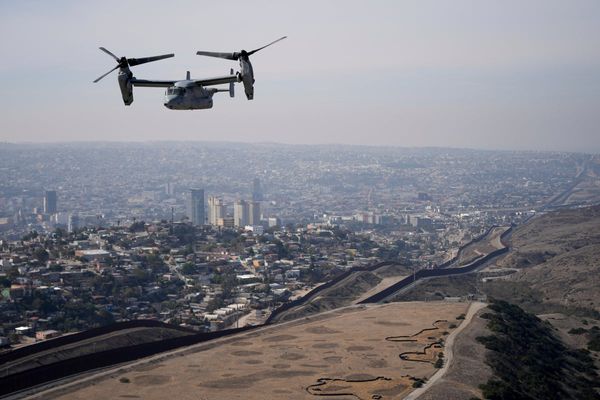
“When I was last here, there was nothing much to cheer you up,” says 10-year-old Joseph Hay, perusing the intricate mural that now dominates one wall of the operating theatres unit at the Royal Hospital for Children in Glasgow. Joseph, who has undergone numerous procedures here after being diagnosed with bone marrow failure, remembers most of all the apprehension of the general anaesthetic. “You’re just waiting for the moment. This wasn’t a place you’d really want to be at all.”
But now, the largest paediatric theatre unit in Scotland “doesn’t even feel like a hospital”, as Joseph joins other former patients and their families to inspect the million-pound transformation they have helped to bring about in a unique collaboration between children and creatives, the first of its kind in the country.
Alyson Walker, a paediatric cardiac anaesthetist who spearheaded the comprehensive and carefully plotted redesign, says of the old look: “It felt like the environment was letting down the staff.”

Some of the changes required were immediately obvious, to correct egregious design failures. For example, the blood fridge, previously accessed by staff in full view of waiting families, has been replaced with a mini toy museum, including building blocks dating from 1882 when the children’s hospital was first built in Garnethill, across the River Clyde.
Others are subtler reflections of Walker’s desire to create “a space that has a soul”, such as the “Wee Room”, a private area with soft lighting, in contrast to the standard clinical glare, where parents can compose themselves after leaving their child in surgery.
Most of all, the rigorous design process has been guided by the patients themselves, consulting children from all over Scotland, with a range of conditions and backgrounds, about the things that make them feel happiest and safest.

Emily Keith, nine, who required plastic surgery on a finger injury, told the designers how nerve-racking it was to encounter “the big red hand that said stop” on the door of the anaesthetic room.
Older children said they wanted to see artwork that reached beyond “babyish” stencils, while younger children needed illustrations that engaged and distracted them at their lower eye level. Others wanted seating that could be turned into a rocking horse or rowing boat with the right imagination.
As a result of this depth of insight, the hard edges and functional paintwork have been blurred and blended in a new reception area with curved archways and desks, blinking fairy lights, lemony sofa benches and colourful, bounceable chairs that render the mood more soft play than pre-theatre.

The vibrant artwork includes 11 animals chosen by former patients, including a paragliding panda, a roller-blading stag and a dolphin splashing out of a flume, who accompany children down the corridors and reappear one in each of the 11 operating theatres.
Starting with a budget of zero, and involving interior designers, architects, environmental psychologists and two key illustrators, Laura Darling and Mark Faulkner, the project demanded a strenuous fundraising effort, including £500,000 committed by the Glasgow Children’s Hospital Charity.
Walker’s passion for the project has been infectious, says the charity’s head, Kirsten Sinclair. “It’s brought individuals and communities together to fundraise, driven by the idea that collectively we can make things better for the tens of thousands of families who use this space.”

The impact on staff has been just as significant, says Tim Bradnock, a consultant paediatric surgeon. “I see really tangible changes when I come into work.” Mano Pagavathiappan, a staff nurse, says following the animal artwork from reception through to theatre feels “like I’m inside the story”.
Walker says: “As a medic, it’s an honour to become part of other people’s stories in those most vulnerable moments. So I wanted to create a space that reflected the incredible children we see every day, and their families and communities, so they could see something beautiful and something of themselves.”







